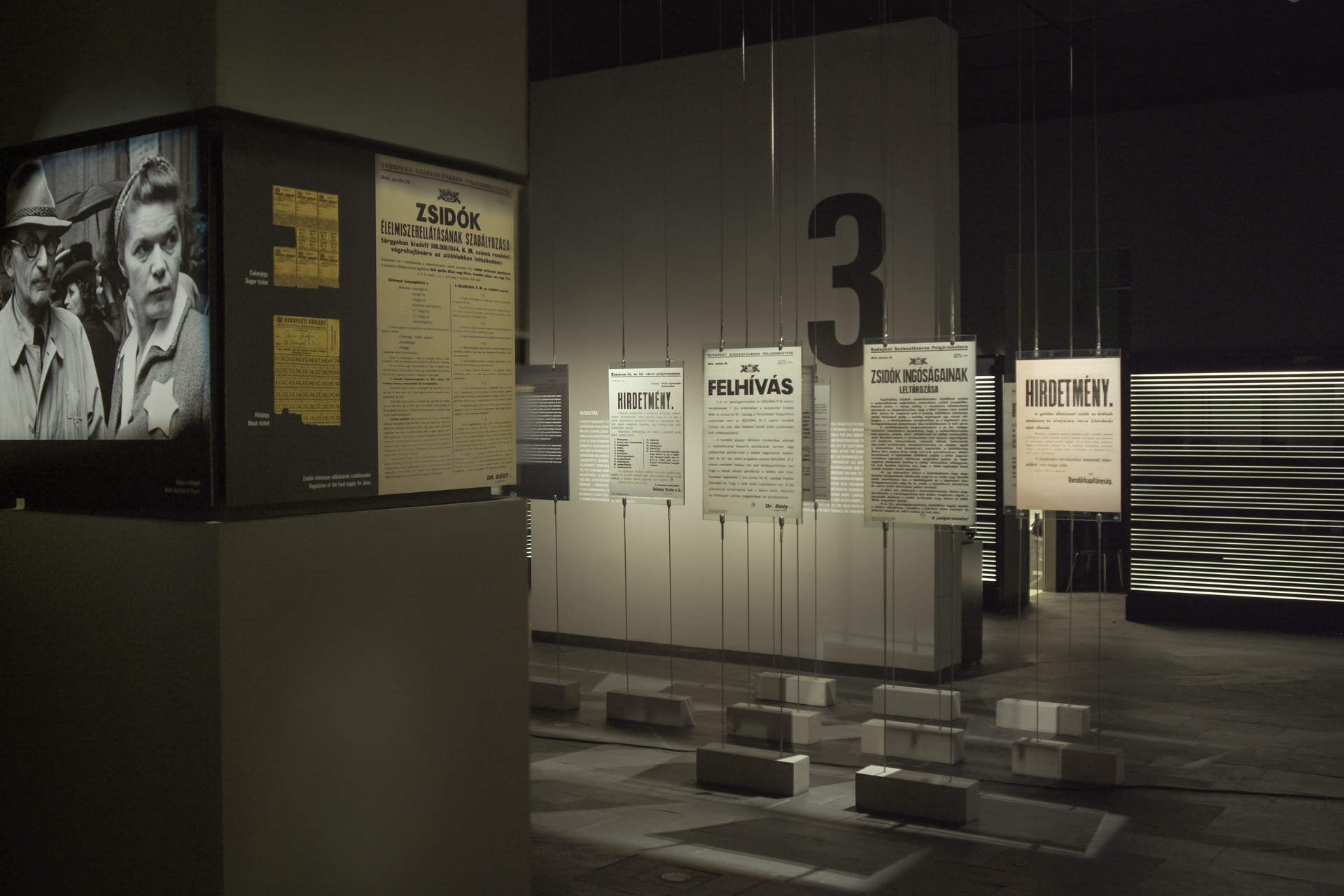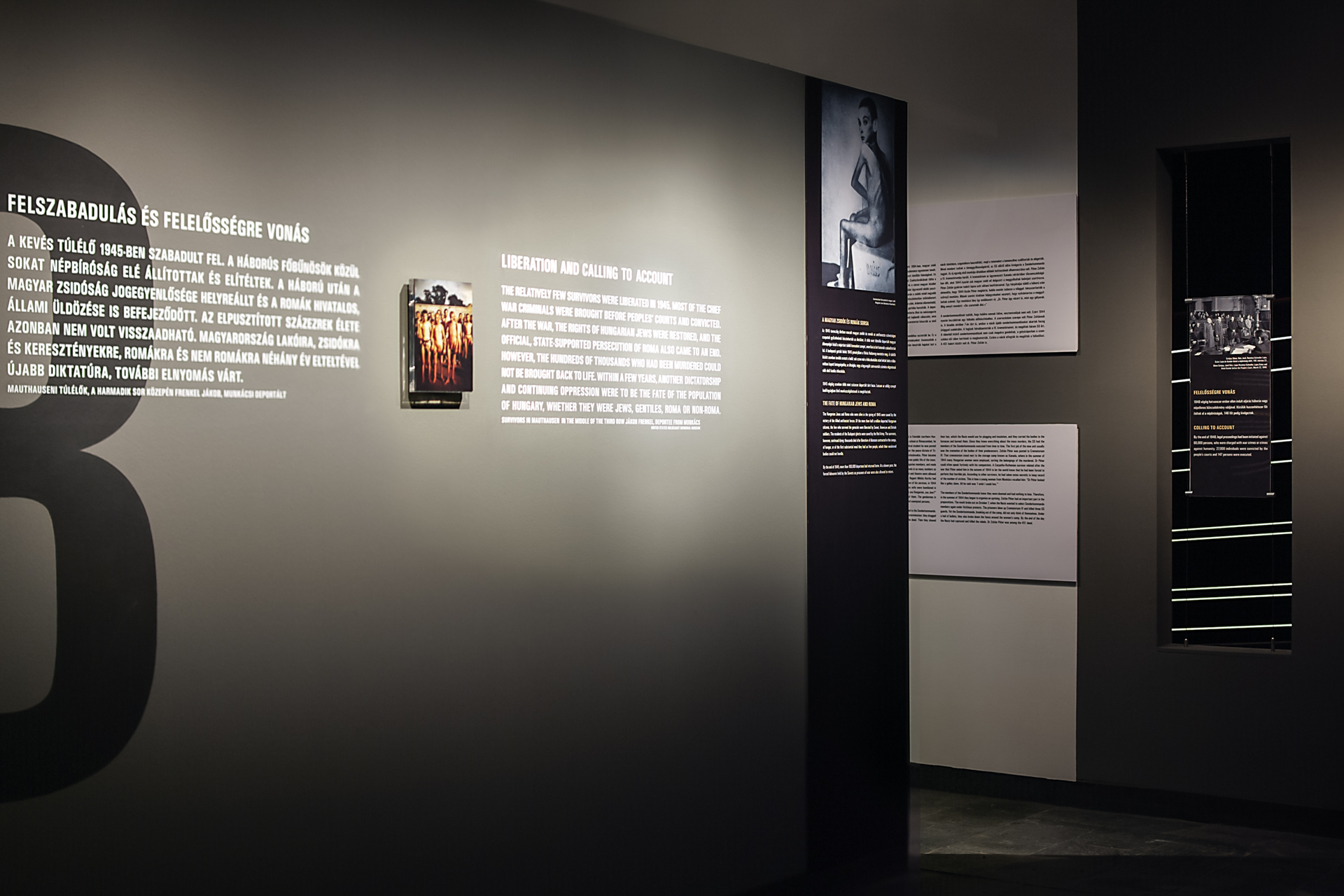Instead of a traditional, chronological interpretation, the exhibition tries to portray the tragic events along a path of the stages of persecution. Deprivation of rights is followed by plundering, then the deprivation of liberty, later of human dignity and, finally, the deprivation of life. The series of real family and personal stories run along the exhibition. The luminous stripes on the wall symbolically run out at the end of the exhibition, and there are only empty showcases instead of the personal items in the opening space. In the closing space, you can hear wedding music deliberately filtering trhough from the first room, reminiscent of the pre-destructive period, while the tilted and tangled showcases in the first room already anticipate the coming tragedy. On the way to the main part of the exhibition the images and sounds of death marches project the upcoming events. From the exhibition, the road leads into a space of remembrance and mourning: the synagogue, where the glass seating installation represents the missing persons, communities, and community spaces.
YEAR
2005
MUSEUM
Holocaust Memorial Center, Budapest
DESIGN TEAM
Zsolt Vasáros, Sarolta Bihary, Mariann Derencsér, and Csaba Orbán - Artonic Design Kft.
GRAPHIC DESIGN
Judit Gelencsér














